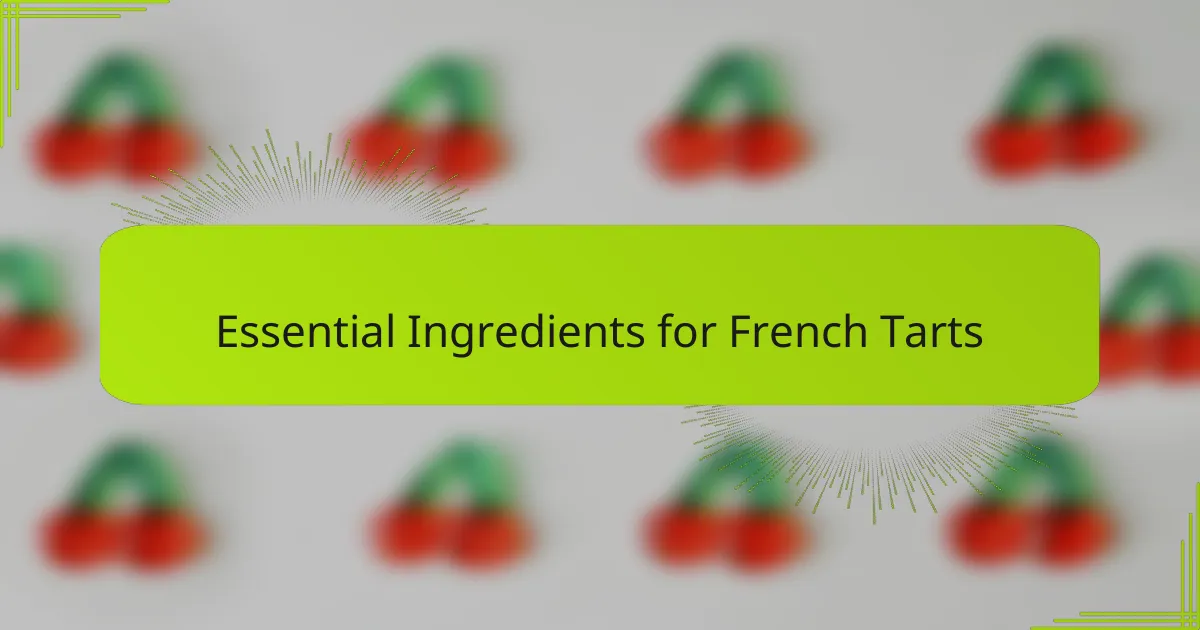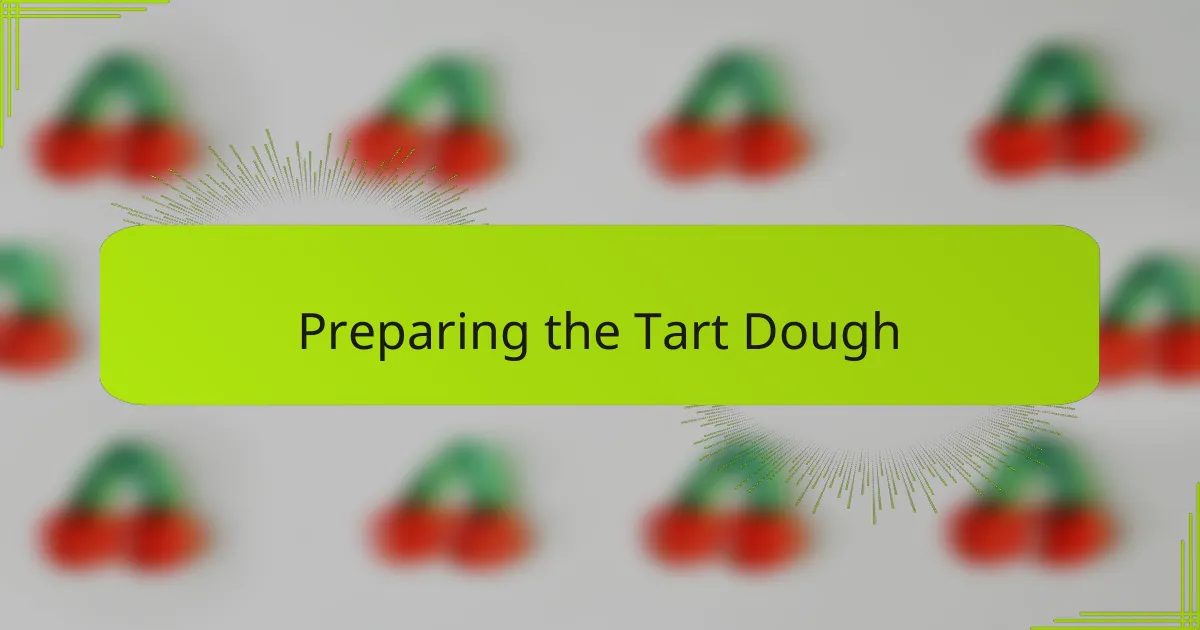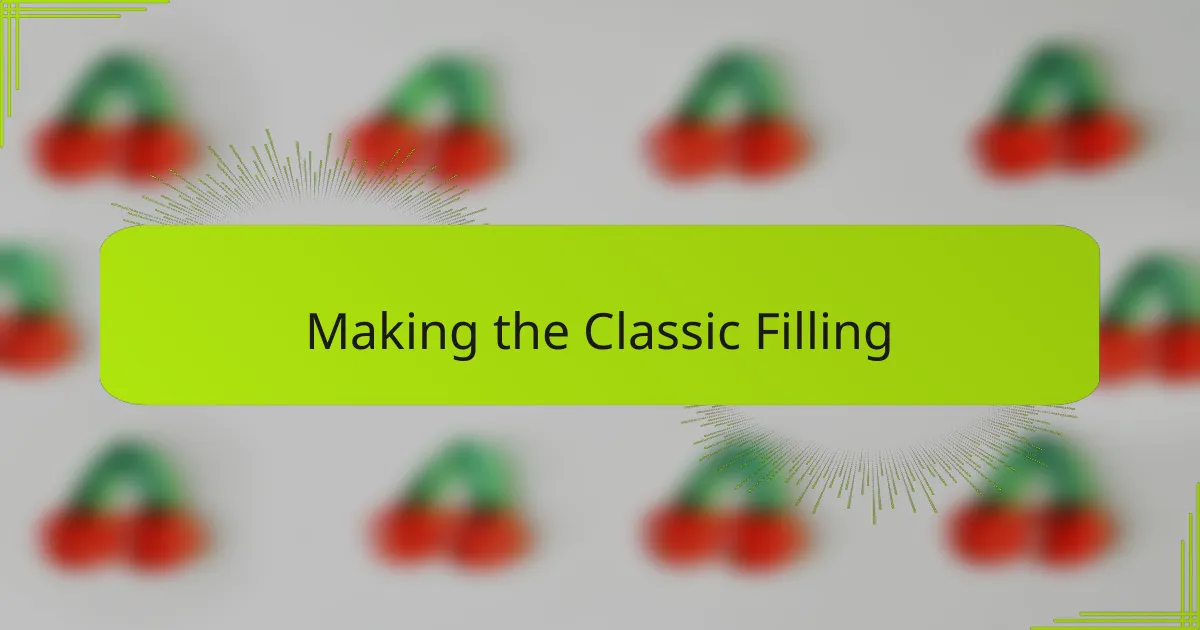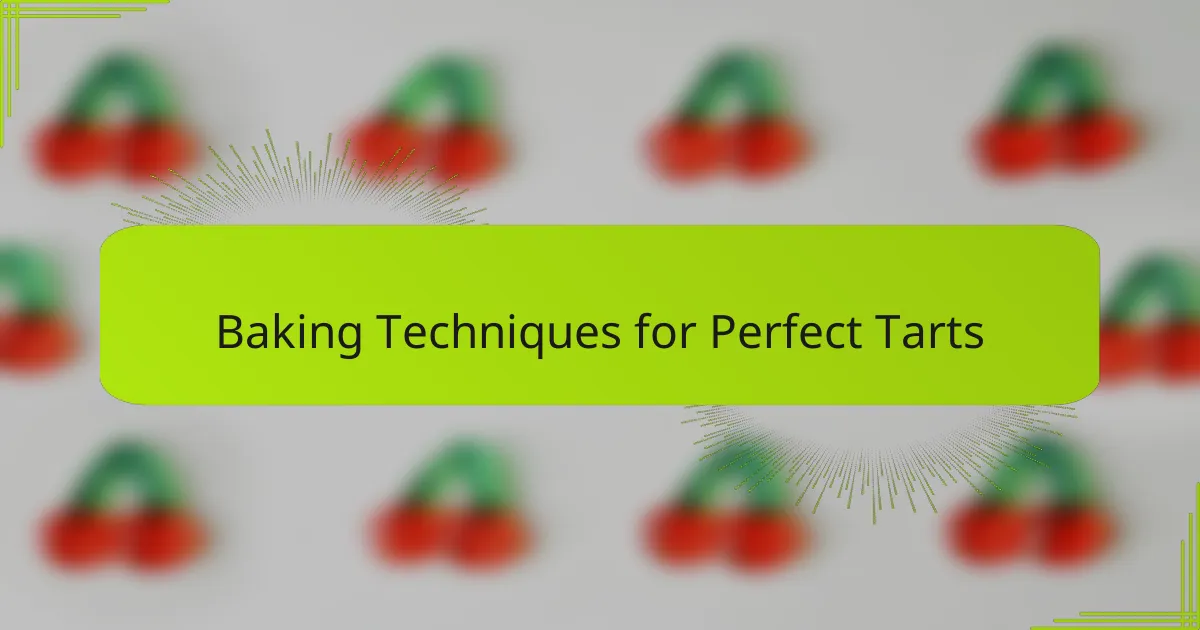Key takeaways
- A French tart features a crisp, buttery crust made with pâte sablée or pâte sucrée, creating a delightful balance with various fillings.
- Essential ingredients include high-quality butter, flour, sugar, and eggs, each playing a crucial role in achieving the desired crust texture.
- Blind baking the tart shell is vital for maintaining crispness and avoiding sogginess, especially when using moist fillings.
- Patience and gentle techniques are key in both dough preparation and filling making, ensuring the best results in texture and flavor.

What Is a French Tart
A French tart, to me, is more than just a dessert—it’s a beautiful balance between a crisp, buttery crust and a luscious filling. Have you ever noticed how each slice feels like a little piece of French tradition on your plate? The simplicity yet elegance of a French tart make it a timeless treat that never fails to impress.
When I first tried baking one, I was struck by how the tart shells are usually made with pâte sablée or pâte sucrée, both of which give that perfect texture—delicate but sturdy enough to hold the filling. It’s fascinating how such a modest combination of ingredients can create a base that steals the show just as much as the fruit or custard topping.
What really captures my heart about French tarts is their versatility. Whether filled with fresh fruits, rich creams, or nutty frangipane, they always carry a sense of warmth and nostalgia. Isn’t it wonderful how this humble tart can tell a story of flavors and memories in every bite?

Essential Ingredients for French Tarts
When I think about the essential ingredients for French tarts, butter always comes to mind first. It’s the richness of the butter that gives the crust its signature flakiness and golden color, making every bite irresistible. Don’t you think the quality of butter can truly make or break the whole tart experience?
Flour and sugar are just as crucial, but what I find interesting is the balance they create. Too much sugar can make the crust overly sweet and fragile, while the right amount adds just the subtle sweetness that complements the filling perfectly. I remember once I accidentally used extra sugar, and the crust crumbled before I even finished baking—it taught me the importance of precision.
Eggs are another key player, especially in pâte sucrée, to bind everything together with a tender structure. I love how just one or two eggs can transform a handful of simple ingredients into a dough that’s both sturdy yet delicate, ready to cradle whatever filling you dream up. Have you ever marveled at how such small additions bring so much magic to baking?

Preparing the Tart Dough
Getting the tart dough just right can feel like a bit of a dance. I usually start by chilling the butter until it’s firm but slightly pliable—that way, when I cut it into the flour and sugar, it creates those lovely tiny pockets that bake into flakiness. Have you ever noticed how cold butter almost seems to trick the dough into crispier textures?
Mixing the dough is where patience truly pays off. I try to handle it gently, folding and pressing rather than over-mixing, because I’ve learned the hard way that too much kneading can make the crust tough instead of tender. It’s a delicate balance, but when you feel the dough just come together, that’s when you know the magic has started.
Chilling the dough before rolling it out is a step I never skip. I remember one time I rushed this phase, and the dough was sticky and nearly impossible to shape. Waiting those extra minutes lets the flour hydrate and the butter firm up again, making the dough silky and easy to roll—a small wait that makes a big difference in the final result.

Making the Classic Filling
Making the classic filling is where the tart truly comes alive for me. I usually start with a simple mixture of eggs, sugar, and cream, whisked until silky smooth. Have you ever noticed how the texture alone hints at the richness and depth of flavor that’s about to unfold?
When it comes to cooking the filling, patience is key. I gently warm the mixture on low heat, stirring constantly, until it thickens just enough to coat the back of a spoon. Rushing this step once led to curdling, a mistake that taught me how gentle heat and steady hands make all the difference.
I love how this classic custard filling sets a perfect stage for fresh fruits or nuts. Its creamy, delicate nature feels comforting, like a warm hug on a cool day. Don’t you think a well-made filling is what transforms a good tart into something unforgettable?

Baking Techniques for Perfect Tarts
One technique I swear by is blind baking the tart shell before adding the filling. It might seem tedious, but pre-baking ensures the crust stays crisp and doesn’t turn soggy once the luscious filling goes in. Have you ever bitten into a tart and felt the crust was more like soft bread? Blind baking is the little secret that avoids that disappointment.
Another tip I’ve learned from trial and error is to prick the dough gently with a fork before baking. It prevents those annoying air bubbles that can lift and warp the crust during the heat. I remember one batch that puffed up like a balloon—comical but definitely not the classic French tart look I aim for.
Temperature control is crucial too. Baking at a moderately high temperature at first helps set the crust quickly, locking in that beautiful golden hue, then lowering the heat finishes it without burning. Finding the perfect baking time and temperature took me several tries, but once I got it right, the results were worth every minute of fiddling. Don’t you find these little adjustments often make the biggest difference in baking?

Common Challenges and Solutions
One challenge I often faced was keeping the tart crust from shrinking during baking. I found that chilling the dough not just once, but twice—once after mixing and again after fitting it into the tart pan—helps relax the gluten and keeps that perfect shape. Have you ever been frustrated watching your carefully rolled dough pull away from the edges? That double chill technique truly eased my worry.
Another struggle that hadn’t crossed my mind at first was avoiding soggy bottoms, especially when using juicy fruit fillings. Blind baking is my go-to solution here. I learned this the hard way after a tart turned out disappointingly soggy, and since then, that pre-baking step has been non-negotiable for a crisp, sturdy base. Isn’t it fascinating how a simple step like this can transform the whole dessert experience?
Lastly, managing the filling’s texture took some trial and error. I recall one batch where an impatient stirrer (that was me) caused the custard to curdle right before pouring it in. From then on, I’ve embraced slow, gentle cooking with constant stirring—trust me, the creamy, silky filling is worth every second of that careful attention. Have you noticed how these small moments of care uplift the entire tart?




